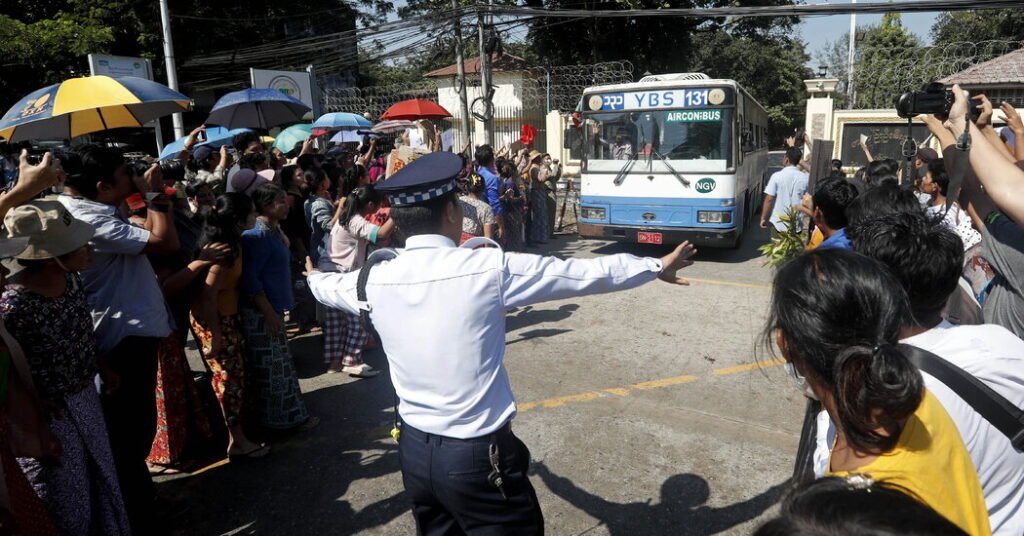Thousands of innocent people were killed. Tens of thousands of other pro-democracy protesters were imprisoned. The return of military rule has wreaked havoc on Myanmar in recent years.
Currently, the military regime is becoming increasingly brutal as rebel uprisings gain strength in the countryside.
There is a new emphasis on imprisoning dissidents and men and women who refuse to join the military. And lethal treatment for people already in custody has been stepped up. More than 100 prisoners died from torture and neglect in the first two months of this year, according to human rights groups and former detainees. They say conditions in military-run prisons are even worse, with prisoners deprived of food, proper sanitation and medical care, and subjected to horrific torture.
“The situation has gotten worse and worse since November,” said Mya Leh, a pro-democracy student activist who was released in January from a Karenni state prison where she had been detained for about three years. “They punched me in the face and hit me with the butt of their guns. My whole body was covered in blood. They also threatened to shoot me in the head and fired a live round in the side of my head. .”
Military spokesman Gen. Zaw Min Tun did not respond to a request for comment.
In February, the military announced compulsory conscription as a sign of defence. The order could be used by the military as a pretext to launch a new arrest campaign, as those who resist conscription face up to five years in prison.
The junta has begun clearing prisons and announced the release of thousands of detainees. However, such freedom is likely to be temporary. Human rights groups say the junta issued a similar “amnesty” last year, but quickly re-arrested many of those released.
Myanmar Witness, a human rights group, said it had examined satellite images that suggested entirely new prison facilities were being constructed and new buildings were being built near existing prisons.
For those who remain in military hands, detention can be deadly. Ko Yar Singh, 43, died of his injuries in January after being assaulted in prison and without adequate and timely medical care, according to the Monland Human Rights Foundation, a pro-democracy group for Myanmar’s Hmong people. . It was announced that Ko Pyay Pyo Aung, 31, who had been suffering from an unknown stomach disease, died in January under similar circumstances. Both men had been arrested by the military government for protesting its rules.
They are among about 120 dissidents who have died in military custody in the first two months of this year, according to the Assistance Association for Political Prisoners (Burma), which tracks detention conditions using Myanmar’s former name. include. This compares to a similar death toll of 602 last year.
According to the group, more than 1,500 people have died in military regime custody since the February 2021 coup. According to the report, the current regime has tortured and killed dozens of detainees. More than 20,000 people remain in junta custody, and the civilian death toll is estimated at more than 4,500.
The ruling military, known as the Tatmadaw, has long been known for bombing civilians as human shields, persecuting ethnic minorities like the Rohingya, and torturing pro-democracy activists. That temporarily allowed the democratically elected government led by Aung San Suu Kyi to share power, before regaining full power three years ago.
“Throughout its decades of existence, the Burmese military has never stopped torturing,” said AAPP co-secretary U Bo Kyi. 1988 uprising. ”
The military now faces its biggest challenge since the coup. The rebels have scored a major victory, and while it remains to be seen whether the alliance will be able to overthrow the junta, the military’s response is clear.
In November, rebels attacked military positions in Loikaw, the capital of Karenni state, and captured large parts of the city. Some junta forces retreated to prisons for safety.
Soe Ae Tau Nai Sweet, 27, who was released in February, said they “took away the food we had left.” “The situation started to get even worse around this time. And because we were political prisoners, we were treated badly. There was very little clean food and it was like eating cat food.”
The armed conflict in Loikaw poses new risks to detainees. “Political prisoners feel that they are hostages or human shields, being used by the military at the cost of their lives,” said Bo Kyi of the AAPP.
For many pro-democracy protesters detained by the military, the first stop is a so-called interrogation center. They are often taken there and tortured before being formally arrested and imprisoned.
“Many of these abuses take place in interrogation centers even before they arrive at the prison,” said Ngai Aue Mon, program director at Monland Human Rights Group.
Sai Lin Oo was released in October after spending more than two and a half years in Loikaw prison.
“We were really lucky because we were liberated before Operation 1111,” he said, referring to the rebel offensive that began in November. “However, there are still 150 political prisoners in Loikaw prison.”

